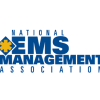Editor’s note: Our Safety Leadership column is written by experts Michael Greene, Blair Bigham and Daniel Patterson. Following is part nine of a 12-part series.
I think the noted businessman Thomas J. Watson Sr. was dreaming when he made this proclamation, at least where health care workers are concerned. Alas, while a noble goal, it is easier said than done.
Over the past several months, my colleagues and I have been guiding you through the steps necessary to making your organization excellent. We’ve never suggested that you should have a perfect safety record, only that you strive for safety excellence. This is an important distinction, because perfection is not always a realistic goal.
Human involvement precludes the perfect delivery of services, be it in health care, aviation or widget manufacturing. This fact is rarely acknowledged by those whose job it is to help (and sometimes save) others. Faulty widgets can be replaced, but life and limb? Nope. When a patient dies in our hands—or by our hands—the result can be devastating. That’s why patient safety deserves special consideration in EMS: When things go wrong, the patient suffers. And since no one enters the EMS profession to hurt someone, the provider suffers, too.
5 steps to reducing patient safety threats
EMS providers are a proud bunch, and admitting mistakes doesn’t come easily. If they fear discipline, they are unlikely to report errors for fear of decertification, termination or medical director chart reviews. Even in a just culture, where they feel comfortable bringing forward their mistakes without fear of retribution, admitting that they did a disservice to a patient is a tough pill to swallow. In an environment where providers work in mostly unsupervised field settings, most patient safety problems stay in the dark.
But here’s where it gets tricky: EMS providers may not even recognize serious patient safety threats. When I say “patient safety threat,” what comes to mind? Giving the wrong medication? Overdosing a patient? Messing up your joule calculation for a pediatric cardiac arrest? Dropping a stair chair? Yep, all of these can affect patient safety. However, the most problematic patient safety threats may not even be recognized.
According to a recent article by Linda Atack and Janet Maher, decision-making and clinical judgment are the top issues facing EMS providers and their patients. Faced with years of scope creep, where new drugs and devices have been added to provider scope with minimal schooling in the foundations of medicine, providers may not be well equipped to make accurate differential diagnoses. This could lead to an inaccurate impression of the patient’s condition and result in poor treatment decisions.
Addressing these gaps in knowledge may not be as daunting a task as it seems. But first, we as an industry need to better understand the health problems of those who call us, so we can best understand how to safely treat them. This requires a level of study that has not been considered for most of our patients but is of the utmost importance. After all, only 10 percent of our patients receive a medication and even fewer receive complex interventions, but 100 percent of them receive a “diagnosis.” (I know we can’t call it that, but our patient impression guides our treatment choices, destination selection and “sign off tolerance.”)
But don’t despair! While much of patient safety is in the dark, there are steps you can take today to reduce the risk of someone getting sicker by calling 911.
www.patientsafetyinstitute.ca.
2. Allow your staff to anonymously report adverse events that affected a patient’s care, as well as near-misses that could have led to poor outcomes. A simple online survey tool can be used, asking, “What happened?” and “How can we as an organization prevent others from doing the same thing?”3. Encourage reporting. Front-line staff need to know that a blame-and-shame culture has no place in your organization. Even more important, your middle management—the supervisors who interact with your staff out on the street—need to get on board. Be forewarned: They may be resistant and express concern about collective agreement red tape, applying support consistently or dealing with “bad apples.” They may also be deep-rooted in past practices of punishment.
4. Praise those who come forward. It takes remarkable courage to admit error, especially in the EMS environment. Highlight staff who come forward as being exceptional, professional, brave and caring.
5. Close the loop. When people make errors and admit to them, the best reward they can receive is to know that lessons have been learned from their mistakes. Highlight system improvements based on the information learned from adverse events or near-misses. This will positively reinforce the behavior and encourage more reporting.
Remembering that our providers are human and will make mistakes is only half of the equation; considering their feelings when harm has been brought to a person they intended to help is the other half. As you move forward in improving your EMS system, place the patient on a pedestal. After all, they are the reason we aim for excellence when we show up to work each and every morning (and seven nights a month).
Blair Bigham is an associate scientist at St. Michael’s Hospital and the University of Toronto, where his research focus is on time-sensitive disease intervention and patient safety in EMS. He is also a practicing advanced care paramedic in both land and rotor EMS. Blair can be reached at bighamb@smh.ca.












